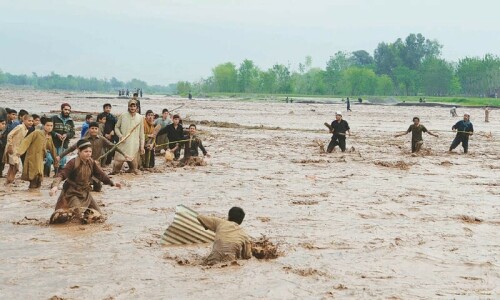PARIS: The A (H1N1) "swine flu" 2009 pandemic probably claimed over a quarter of a million lives, 15 times more than the 18,500 reported a paper in The Lancet Infectious Diseases journal said Tuesday.
The elevated toll underlined the need for better planning and vaccine distribution, said a team of epidemiologists and physicians who made a statistical model based on population and infection estimates to present what they believe is a more accurate picture of the pandemic's reach.
"This study is one of the first to provide a global estimate of deaths caused by the 2009 H1N1 virus," lead author Fatimah Dawood of the US government's Centers for Disease Control and Prevention told AFP in an email exchange.
"Unlike most other mortality estimates for the 2009 pandemic, this study includes estimated mortality for countries in southeast Asia and Africa where surveillance data on influenza, associated mortality are limited."
Some 18,500 deaths had been reported to the World Health Organization (WHO) from confirmed laboratory test results, but the international researchers believe this number to be a gross underestimation.
They wrote that "... diagnostic specimens are not always obtained from people who die with influenza and the viruses might no longer be detectable by the time of death in some people."
The team estimated there were 284,500 deaths from swine flu in the 12 months from April 2009. But the figure may be as high as 575,400, they said.
Between 250,000 and 500,000 people die of seasonal influenza every year, according to the WHO.
In the flu 2009 season, H1N1 was the "predominant virus", said Dawood.
But comparing the numbers alone did not yield an accurate picture, she stressed, as 80 per cent of swine flu victims were younger than 65, while the yearly seasonal flu mainly tends to claim older victims.
The researchers said 51 per cent of swine flu deaths were estimated to have occurred in Southeast Asia and Africa, which account for 38 per cent of the world's population.
The team hoped the work would help improve planning and surveillance, as well as boost vaccine production and delivery, especially to Africa and Southeast Asia, ahead of future pandemics.
Dubbed swine flu, the virus affected some 214 countries and territories after it was uncovered in Mexico and the United States in April 2009.
The WHO declared it a pandemic in June that year. It was declared over in August 2010.
A WHO-appointed group of experts last year published a damning report on the UN health agency's handling of the pandemic, saying that it failed to issue timely guidance and that its flu plans needed revision.
The Council of Europe accused the agency of causing unjustified scares and a waste of public money as countries scrambled to buy vaccines.












































Dear visitor, the comments section is undergoing an overhaul and will return soon.